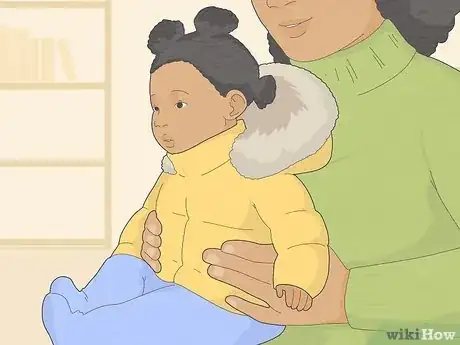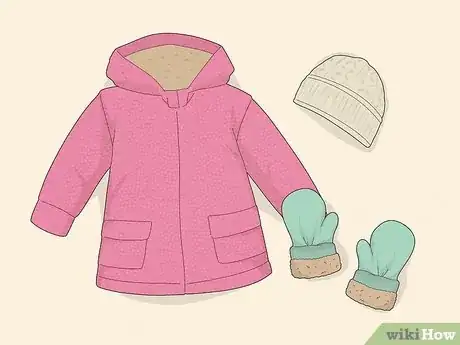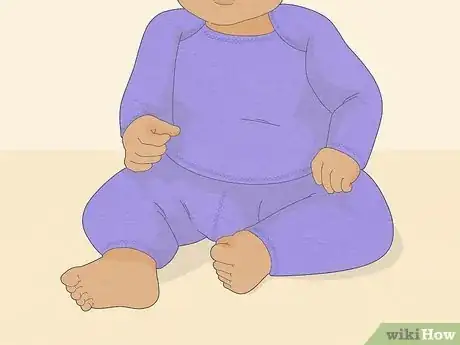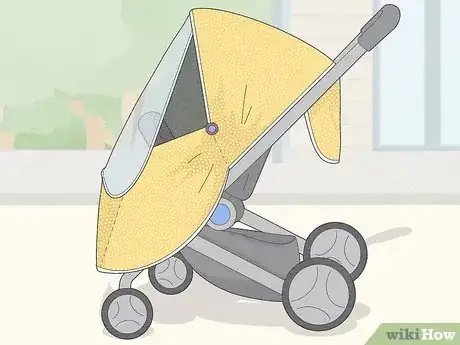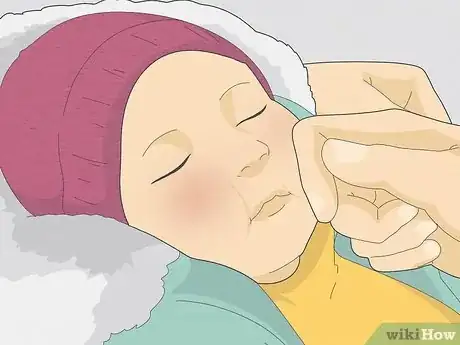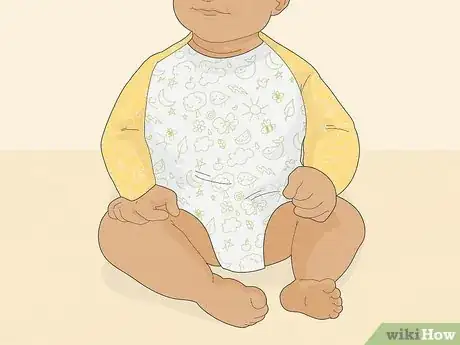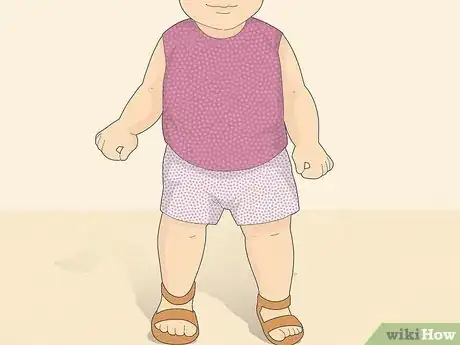This article was co-authored by Andrea Rudominer, MD, MPH and by wikiHow staff writer, Caroline Heiderscheit. Dr. Andrea Rudominer is a board certified Pediatrician and Integrative Medicine Doctor based in the San Francisco Bay Area. Dr. Rudominer has over 15 years of medical care experience and specializes in preventive health care, obesity, adolescent care, ADHD, and culturally competent care. Dr. Rudominer received her MD from the University of California, Davis, and completed a residency at the Lucile Packard Children's Hospital at Stanford University. Dr. Rudominer also has an MPH in Maternal Child Health from the University of California, Berkeley. She is a Member of the American Board of Pediatrics, a Fellow of the American Academy of Pediatrics, a Member and Delegate of the California Medical Association, and a Member of the Santa Clara County Medical Association.
There are 9 references cited in this article, which can be found at the bottom of the page.
This article has been viewed 10,491 times.
It's nice outside, but maybe a little chilly—so how should you dress your baby for a day outdoors? You'll want to make sure they're cozy in the cold but not so hot that they're uncomfortable. Don't worry, we've got you covered! For expert-backed tips on how you should dress your baby for 50-degree weather, read on.
Steps
Tips for Dressing a Baby in Cold Weather
-
1Dress your baby in one more layer than you're wearing yourself. This is a great rule of thumb if you're unsure how much bundling your baby needs. Walk outside and determine how many layers you need to feel comfortable in the cold. Then, dress your baby in one additional layer. Babies can't regulate their temperatures as well as adults can, so if you're cold, then your baby definitely is too.[1]
- So, for example, if you’re in a sweater and pants, dress your baby in a t-shirt, sweater, pants, and a jacket.
- If you’re in a jacket, dress your baby in a thick coat. You get the idea!
-
2Pack a few light layers just in case the temperature drops. Because your baby has trouble regulating their internal temp, layers will be super helpful while you're outdoors together. As the weather gets colder, throw on new layers to ensure that your baby remains comfortable.[2]
- Some layering options are onesies, sweaters, light jackets, coats, gloves, hats, and even snowsuits.
- When the two of you head outdoors together, blankets are a great idea. If clouds or wind cause a temperature drop, swaddle your baby for warmth.
-
3For temps under 50 degrees, dress your baby in a thermal base layer. Wool and polyester make for the perfect material choice, but cotton should be avoided. Wet skin can lead to hypothermia on chilly days, so to keep your baby safe, keep them as dry as possible. Merino wool, for instance, absorbs 40% humidity, and on top of that, it can regulate your baby's temperature.[3]
- For additional protection, check that your baby's diaper is dry regularly.
-
4Protect your baby from wind, rain, and snow with rain guards and jackets. Throw a rain guard over your baby's stroller to keep them warm and dry in the case of unexpected chill or precipitation. Rain jackets, coveralls, or suits can do the job as well.[4]
- Note that these products, rain guards especially, will warm your baby up quickly.
- Because of that, look out for signs of over-heating. Remove a layer from their outfit and pay close attention to their comfort level afterward.
-
5Watch your baby's skin and behavior to determine if they're cold. If you’re worried that you haven’t dressed your baby in enough layers, look out for signs that they're chilly. If you notice these signs, throw on another blanket:[5]
- They're fussy or irritable
- Their hands, feet, and back of the face feel cold to touch
- Their skin turns red or pale
- They're shivering
- Hypothermia can also cause lethargy. If your baby is unusually silent, still, or low-energy, that could be a sign that they’re dangerously cold. Get inside and perform skin-to-skin cuddling ASAP. Call your doctor right away.
How to Dress a Baby for Warm Weather
-
1Dress your baby in a single layer when the temperature warms up. Though it never hurts to bring along extra layers in case of temperature shifts, when it's 70 degrees or above outside, you should be more concerned with overheating and dehydration than you are with bundling them up.[6]
- As such, your baby will be comfortable in a single layer of clothing, like a long-sleeved onesie (long-sleeved to protect them from sun exposure!).
-
2Pick fabrics that are lightweight and breathable—like cotton. Your baby should be dressed in loose material that can easily trap perspiration. So in addition to cotton, muslin would be favorable over synthetic fibers like polyester.[7]
- To allow for more breathability, make sure to dress your baby in sandals.
- Heat is lost mainly through the head and feet, so as long as their toes are safe in the shade, leaving their feet uncovered would be a great way to cool your baby down.
-
3Keep your baby out of direct sunlight as much as possible. On hot days spent outdoors, be sure to equip your baby with sun protection. Either use a wide-brimmed hat with a long flap in the back, a sunshade on their stroller, natural shade, or even an umbrella. Apply sunscreen of at least 30 SPF and keep applying regularly throughout the day.[8]
- For eye protection, dress your baby in a pair of sunglasses as well.
-
4Observe your baby's heartbeat and behavior to ensure they're not too hot. Overheating can be extremely dangerous to your little one, and it can happen year-round. Luckily, signs of overheating are typically obvious. Take your baby into a cold room, remove layers, and call your pediatrician immediately if they show signs like:[9]
- Warm or red skin
- Quick heartbeat
- Fever
- Throwing up
- Dizziness
- Low movement (or unresponsiveness)
References
- ↑ https://www.stanfordchildrens.org/en/topic/default?id=warmth-and-temperature-regulation-90-P02425
- ↑ https://www.kindercare.com/content-hub/articles/2016/november/winter-rules-the-art-of-dressing-your-kids-for-the-cold
- ↑ https://www.motherandbaby.co.uk/baby/baby-care/baby-winter-clothes/
- ↑ https://youtu.be/tfbhsJ5W9HE?t=113
- ↑ https://www.parents.com/baby/health/babys-first-winter-a-survival-guide/
- ↑ https://www.healthychildren.org/English/ages-stages/baby/diapers-clothing/Pages/Dressing-Your-Newborn.aspx
- ↑ https://www.parents.com/baby/care/newborn/making-baby-comfortable-in-summer-heat/
- ↑ https://www.nhs.uk/conditions/baby/first-aid-and-safety/safety/safety-in-the-sun/
- ↑ https://www.happiestbaby.com/blogs/baby/baby-overheating
